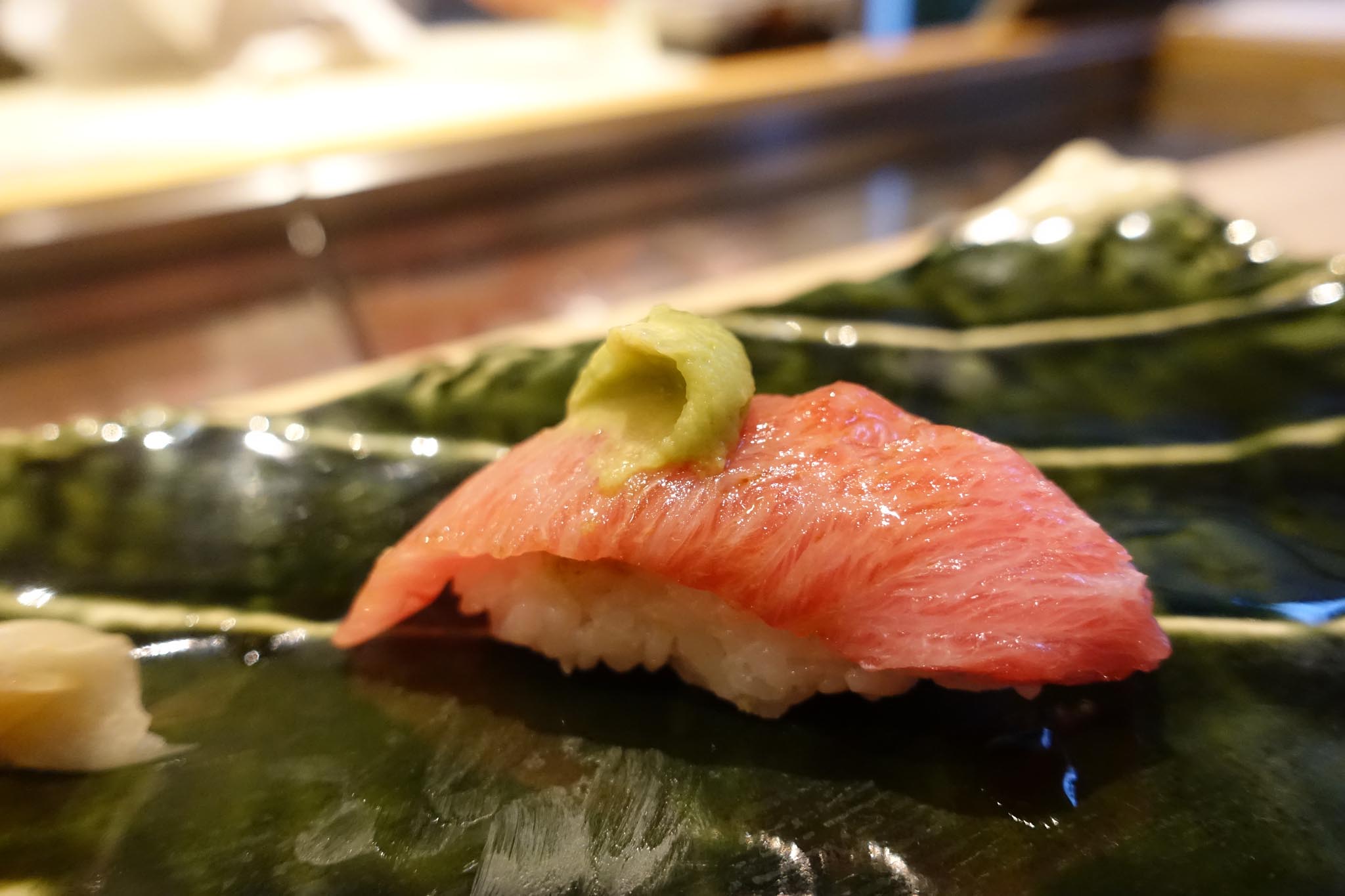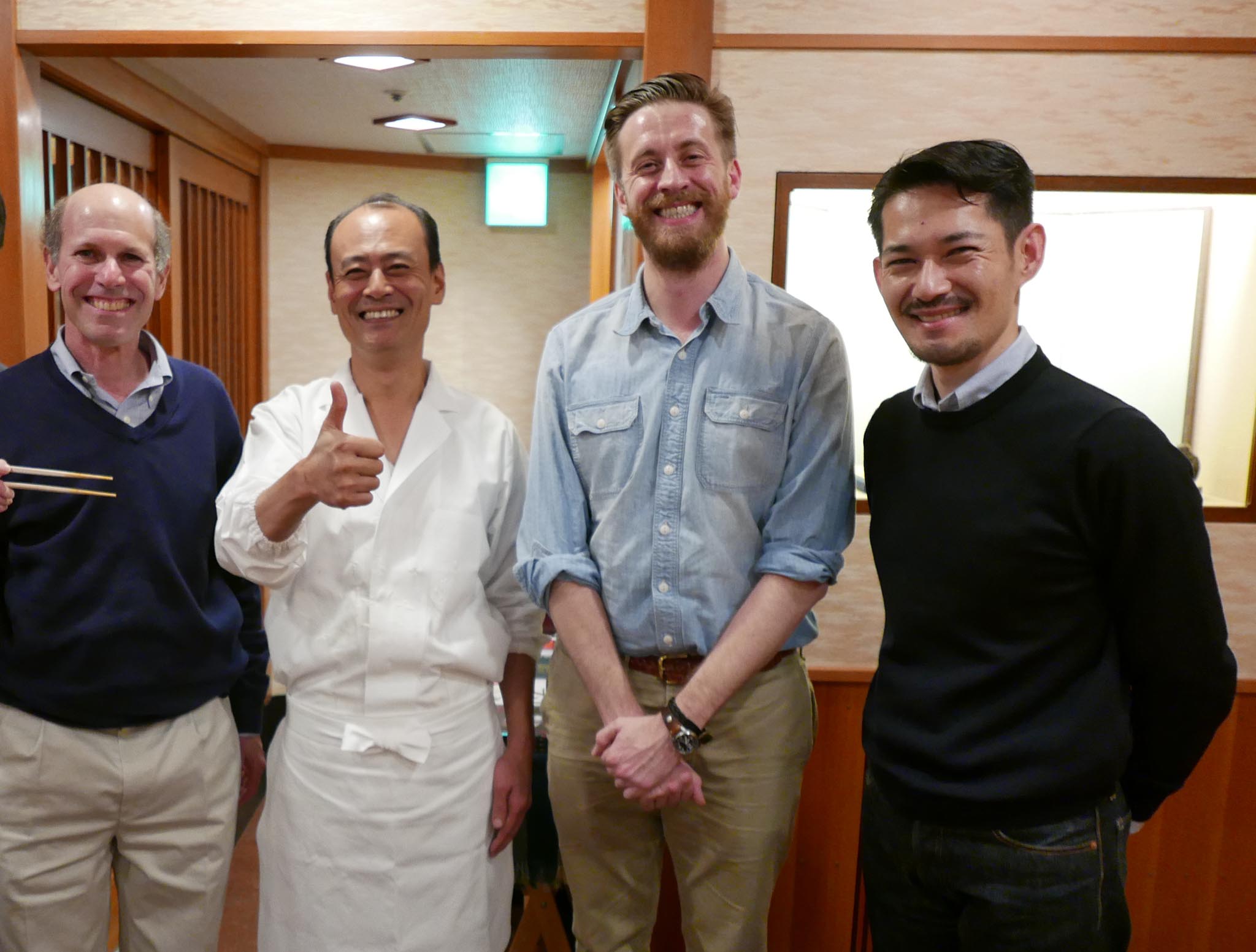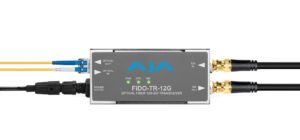
Sushi is not socially distant. Andy Bellamy in pre-pandemic days, providing bounce fill with his napkin at Yamazato in Amsterdam.
This is not an article about sushi.
Nevertheless, let’s digress. Remember when you could sit elbow to elbow at a finely sanded hinoki counter and the greatest fear might be fugu poisonous blowfish if it were part of the omakase evening? You might worry about the provenance of that raw oyster sitting on a stone slab or how many days ago the Hokkaido crab staring at you was caught.
Which brings us to the author of this article. Andy Bellamy has been a co-conspirator with Nick Rashby, Bryce Button, Karen Raz, Arato Ogura and me in sushi adventures worldwide. Intrepid explorers, we spent horrifying amounts of time on research to ultimately triangulate the most promising place within reasonable, and sometime insane, travel time from whatever trade show we were attending. We managed to avoid eviction from Yamazato in Amsterdam, Sukiyabashi Jiro in Roppongi Hills and other fine establishments whose chefs suffered our antics in tabletop lighting and camera tests between Michelin starred bites.
At the end of one evening, Chef Takashi Ono gave us his father’s book on sushi etiquette, “Jiro Gastronomy.” Yes, that Jiro, who Dreams of Sushi. The book’s first of ten sushi commandments warned, “Please refrain from taking photos of the sushi. The only sure way of enjoying Jiro’s sushi is to concentrate on dining.” Oops.
The next commandment was, “Our recommended beverage is green tea.” Too late. We had already polished off several bottles of Sukiyabashi Jiro’s smoothest Junmai Daiginjo, made from rice also polished, but in a different way—to micron-accurate lens-like tolerances.
We may have been spared expulsion because Bellamy’s euphoria had grown in intensity as the evening progressed and his expository praise of Chef Ono’s artistry was both poetic and eloquent.
Here now is an equally eloquent discourse by Andy on production and social distancing using AJA products.
by Andy Bellamy
Product Marketing Manager, AJA Video Systems
Introduction
The recent global spread of COVID-19 has meant a lengthy lull in film and television production to protect cast and crew. Newly introduced guidelines mean that production can begin again with important factors to consider in returning to work safely. Television and film production sets have traditionally been very busy places, bustling with constant activity, often in close quarters. Video and audio is required in more than one place on set or location. So now, with increased focus being made on social distancing, crew will be further away physically from each other than they were before.
Recently released regulations for film and television production state physical distancing of at least 6 feet between people is required on all off-camera areas. This includes the cast and crew, holding and common areas, the video village and all other work places. New areas and potential dual stages for setup prior to actor presence and crew departure means that many more crew members, from art directors to producers, will be watching shoots in real time from a safely distanced vantage and longer cable runs, with remote equipment configuration and control, to ensure the health and welfare of all on set.
Equipment such as video village monitors will be placed further away from the main action to allow for this distancing. AJA Video Systems makes a number of products that can help to implement these requirements and increase the safety of personnel both above and below the line, crew members and talent, while providing full control over devices and media remotely.
Creating Distance through Fiber Connections
A typical production set has SDI (serial digital interface) cable runs to connect cameras to areas where video monitoring is required. In an age of common 4K or UltraHD camera sources, 12G-SDI simplifies cable runs and troubleshooting while also decreasing the amount of time for both setup and distribution.
Examples of 4K 12G-SDI include video feeds from cameras to monitors in a video village, to the director, DP, script supervisor, producer and other crew members who benefit from a monitor during production. Recording to additional devices for either primary or backup recording is also a typical requirement. These areas are now likely to be distanced on-set or even near-set, but it remains important to keep the signal quality high—with the least latency to ensure the fidelity of the image for critical immediate approval and backup, as well as having end-to-end security of camera signals. SDI cabling however can’t be run for overly long distances without signal degradation or loss of sync.
But SDI video cable runs, including those which are 12G-SDI, can be significantly extended by using fiber converters from AJA. Fiber optics allow the transmission of digital information (in this case digital video and audio) as light pulses through glass or plastic fibers almost as thin as a human hair.
AJA FiDO fiber optical converters can extend high-frame rate 4K video and audio up to 10 km. Single-Channel converters carry a single video and audio feed whereas Dual-Channel converters carry more than one.
You can also choose between single-mode or multi-mode fiber. Multi-Mode fiber cable is more flexible for cable runs and can be curved, taken around corners without loss of signal but overall distance is curtailed compared to single-mode. AJA FiDO converters are also format agnostic, so various SDI-based signals can be transported, even camera RAW formats.
- AJA FiDO-4T
- AJA FiDO-TR-12G
AJA FiDO converters are easy to use and come in three main types: Transceivers, Transmitters and Receivers. Instead of cabling a camera directly to a monitor or recorder via SDI cable, the video output of the camera is plugged directly into the FiDO Transceiver or Transmitter. Optical fiber cables are then run from the FiDO converter to wherever the monitors are on set, without any loss. The optical fiber cables are typically terminated with either ST or LC connectors and AJA provides options for both.
For on-set use, many prefer an ST connector with its locking barrel, well suited to the rigors of production. Simply add the FiDO Transceiver or Receiver converters that correspond to your needs at the other end of the fiber optical cable run to provide the output required.
Low latency for fiber transmission also means that a focus pulling monitor can be added to the socially distanced set to allow for precise, no-latency control from a remote position.
Recording, Playback and Backup
Most productions have a video village for on-set viewing and playback of content being shot. Typically, this includes a DIT station, monitors for viewing, as well as dedicated video and audio recording devices. The video village has traditionally been fed by SDI video cables or wireless transmission from the camera as well as embedded audio from the sound recordist.
Embedding audio from the sound recordist to the 12G-SDI feed from the camera is easily achieved by using AJA’s 12G-AMA. Its analog XLR audio inputs allow up to four channels of audio to be added into the 12G-SDI output.
As the video village itself may now be further away, AJA can provide additional safeguards for distance working by using the fiber optic infrastructure described in the previous section, or by simply choosing a 12G-AMA model version with the appropriate Fiber SFP (Small Form-Factor Pluggable) pre-installed.
Once the fiber optic cable runs are terminated with SDI converters, AJA offers the KUMO 1616 or 3232 12G routers so that you’re able to route 12G-SDI video with ease using the accompanying KUMO Control Panel or web browser control.
KUMO routers can also act as distribution amplifiers, allowing one 12G-SDI input to become as many as required for the purposes of the set.
For recording and playback at up to 4K 60p, AJA offers the Ki Pro Ultra 12G, a digital video recorder and player with optional fiber connectivity built in, meaning that fiber optic cable runs can be connected directly to the device in the video village.
- AJA Ki Pro Ultra front
- AJA Ki Pro Ultra rear
Once connected, Ki Pro Ultra 12G can record the incoming digital video and audio as post-friendly Apple ProRes or Avid DNx formats and also provide playback of recorded material on demand. All the features of Ki Pro Ultra 12G are available remotely via ethernet as a web browser-based control system, meaning that an operator in the video village can provide full support to the needs of the production at a safe distance with no compromise in performance.
Ki Pro Ultra 12G can also be fed 12G-SDI directly from the KUMO router as shown in this Video Backup Detail diagram.
For simultaneous H.264 proxy recordings, an AJA Ki Pro GO H.264 recorder can be cascaded from the Ki Pro Ultra 12G via 3G-SDI as an HD down-converted back up, providing smaller file size recordings onto off-the-shelf USB3 media, allowing for easy review of captured material on any computer or mobile device. Ki Pro GO offers the same easy front panel buttons or web browser-based control.
- AJA Ki Pro GO front
- AJA Ki Pro GO rear
Conversion
We’ve already seen that you can connect long fiber optic cable runs directly to digital video recorders for distanced playback in a video village, but sometimes there are other requirements for the video before it is viewed or recorded.
An example of this would be shooting with HDR (high dynamic range) delivery in mind. By using the AJA Hi5-12G-R-ST converter, you are able to receive a long ST or LC fiber optic cable run that connects directly to the converter. The converter then is able to generate HDR10 or HLG metadata via its HDMI v2.0 output without any extra conversion, so the image can be viewed appropriately on HDMI HDR monitors on set.
If more tools are required to adjust or format-flip the image before it is viewed on set, AJA also offers fiber-enabled frame synchronizers like the FS-HDR. It provides a broad base of HDR/SDR conversion, color correction, and scaling tools for HD/4K, and when ganged together, can also support 8K formats.
FS-HDR is fully controllable via Ethernet and a web browser UI in much the same way as with the Ki Pro Ultra 12G. FS-HDR also offers support for LUTs, making it an excellent choice for any HDR shoot by offering a multitude of features that can help ensure that the HDR video is viewed as intended, while maintaining any distancing required. Using in-line devices to transpose images in real-time on set saves valuable time in post while ensuring that images are viewed as accurately as possible on set.
When the need arises, you can also live stream your shoot to any staff and crew members who may be in a hotel, at home or in their office. For these truly remote situations, AJA offers several products—including the stand-alone HELO streaming device for easy and reliable H.264 delivery to CDN (Content Delivery Network) and private platforms. There are AJA Io products for multi-channel needs and the rapidly evolving Video IP landscape—including SMPTE ST 2110 (uncompressed video and almost no latency) and SRT (Secure Reliable Transport), which we will discuss in our next article.





























